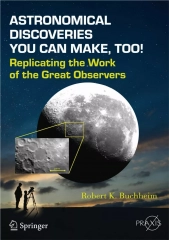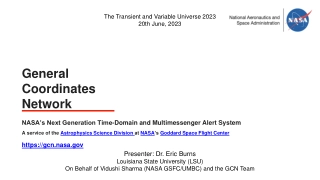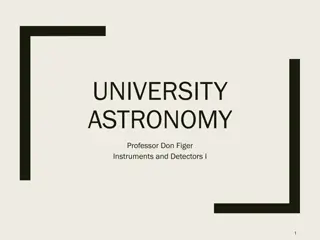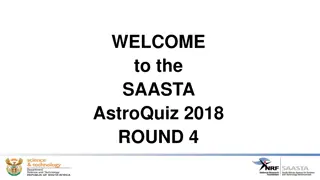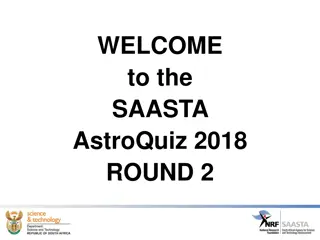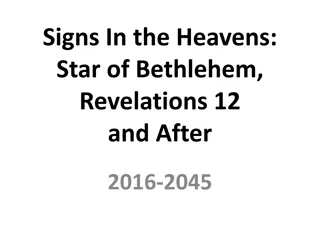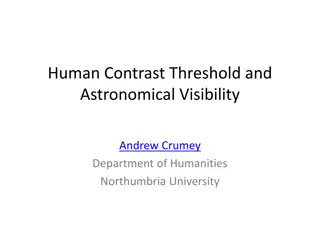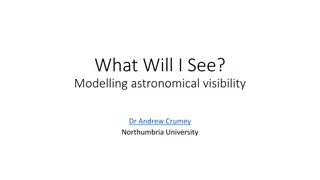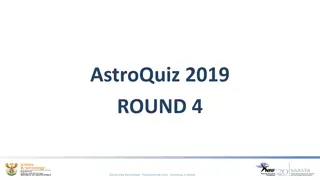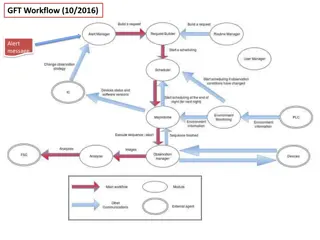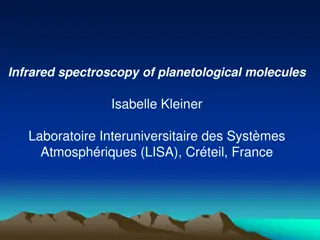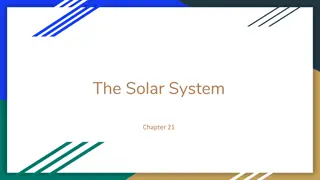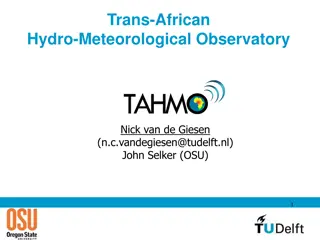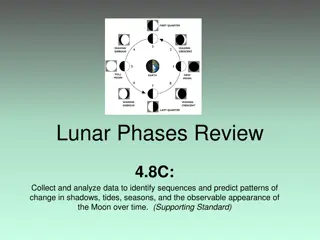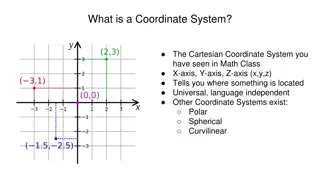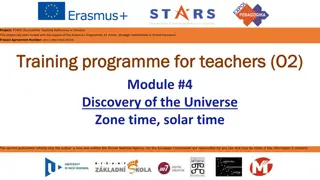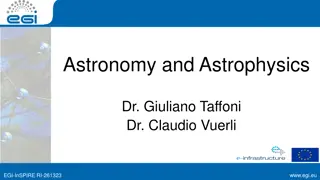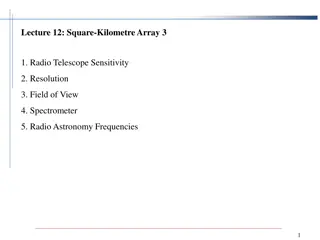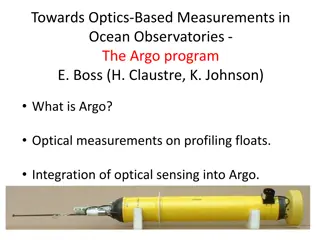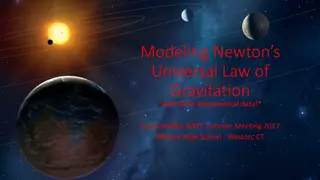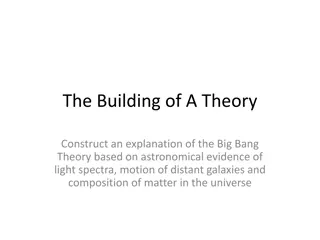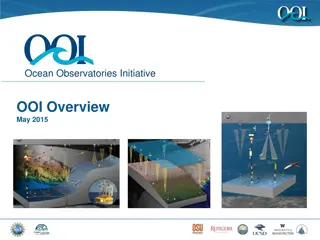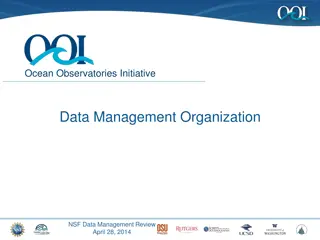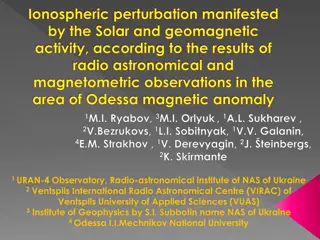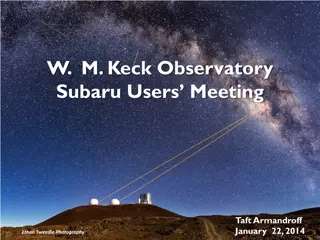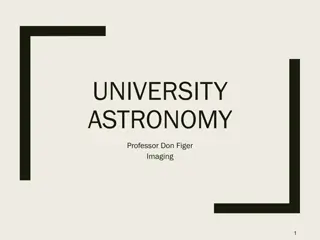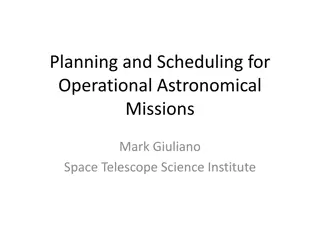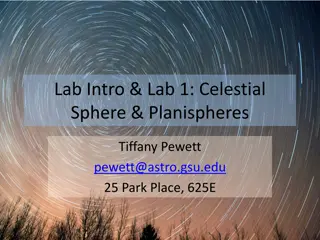PDF/READ❤ Astronomical Discoveries You Can Make, Too!: Replicating the Work of
\"COPY LINK HERE ; https:\/\/getpdf.readbooks.link\/3319156594\n\n[PDF READ ONLINE] Astronomical Discoveries You Can Make, Too!: Replicating the Work of the Great Observers (Springer Praxis Books) | Astronomical Discoveries You Can Make, Too!: Replicating the Work of the Great Observers (Springer P
6 views • 6 slides
General Coordinates Network
Delve into the realm of transient astrophysical events with NASA's General Coordinates Network (GCN). Dr. Eric Burns from LSU, along with the GCN team, facilitates real-time alerts and groundbreaking discoveries in astrophysics. Witness the evolution of GCN to serve new transients, messengers, and o
1 views • 26 slides
The Large Lakes Observatory and The Science of Freshwater Inland Seas
The Large Lakes Observatory (LLO) at the University of Minnesota Duluth is a leading academic program focused on limnology, oceanography, and research dedicated to inland seas. LLO's unique focus on oceanographic research methods applied to large lakes worldwide is supported by the Blue Heron resear
9 views • 28 slides
Ancient Astronomy and Cosmologies Across Different Civilizations
Ancient civilizations like Babylonian, Assyrian, Egyptian, and Chinese had profound knowledge of astronomy, including tracking celestial events, developing calendars, and recording astronomical phenomena. The Greeks contributed to cosmology, contemplating the nature of the cosmos. Beliefs in a spher
2 views • 28 slides
Modern Optical and Infrared Astronomy Instruments
This presentation by Professor Don Figer explores modern optical and infrared instrumentation used in astronomy, including cameras, spectrographs, and specialized devices like coronagraphs. It covers instruments such as HST, Spitzer, Chandra, JWST, ELTs, and WFIRST, highlighting their capabilities i
0 views • 40 slides
Slitless Stellar Spectroscopy with the SA100 Grating Procedures
Explore the world of slitless stellar spectroscopy with the SA100 grating as detailed by Anthony Harding in the ongoing creation of the Harding Spectra Library. Learn about the equipment used, the process of determining instrument response, capture procedures, and stacking techniques for obtaining s
0 views • 30 slides
Advanced Web Accessibility Tools Project Overview
The WAI-Tools Project under Horizon 2020 aims to enhance web accessibility assessments with advanced decision support tools. Key elements include introducing progress on Accessibility Conformance Testing (ACT) Rules, updates to national observatories, WCAG-EM Report Tool, and large-scale accessibili
3 views • 15 slides
SAASTA AstroQuiz 2018 Round 4 - Test Your Astrophysics Knowledge!
Challenge your knowledge of astronomy with these 10 questions from the SAASTA AstroQuiz 2018 Round 4. Test your understanding of telescopes, galaxies, planets, and more in this exciting quiz. Answer questions on various aspects of astronomy, from telescope construction in South Africa to planetary r
0 views • 44 slides
SAASTA AstroQuiz 2018 Round 2 - Test Your Astronomy Knowledge!
Engage in the SAASTA AstroQuiz 2018 Round 2 to challenge your understanding of astronomy. Answer questions within 60 seconds and discuss with your team. Explore topics like the Sun, stars, galaxies, and more. Test your knowledge and have fun with this astronomical quiz!
0 views • 46 slides
Signs in the Heavens: The Revelation of the Sign of Yahushua and Biblical Astronomy
Explore the celestial phenomena and biblical interpretations from 2016 to 2045, including the Star of Bethlehem, Revelation 12 prophecy, and the significance of astronomical signs in understanding spiritual truths. Delve into the integration of non-Bible sources like the Book of Jasher and Book of E
0 views • 93 slides
Fun and Educational Interactive Challenges for Secondary School Students
Engage secondary school students in interactive challenges featuring famous personalities, astronomical wonders, popular social media accounts, iconic symbols, and more. Explore a variety of topics including literature, space, social media, culture, history, and creativity with these thought-provoki
0 views • 30 slides
Human Contrast Threshold and Astronomical Visibility
Delve into the practical implications of human contrast threshold and astronomical visibility to explore the faintest stars visible to the naked eye or through telescopes under various lighting conditions. This study aids in comprehending the essence of dark skies, the historical evolution of light
0 views • 28 slides
Astronomical Visibility and Brightness Factors
Explore the factors influencing astronomical visibility, such as telescope size, aperture, and light pollution. Learn about the visual systems affecting our ability to see in different lighting conditions and understand concepts like illuminance, luminance, and apparent magnitude in astronomy.
0 views • 39 slides
AstroQuiz 2019 Round 4 Questions
Test your astronomical knowledge with these challenging questions about planets, stars, and celestial phenomena. From identifying the red planet to understanding equinoxes and the Earth's rotation, see how well you fare in this cosmic quiz!
0 views • 44 slides
GMACS for Scientists: Overview of GMT's Optical Spectrograph
GMACS (GMT Multi-Object Optical Spectrograph) is a cutting-edge spectrograph with a wide wavelength coverage and high resolution, designed for astronomical research. It features a field corrector/ADC system, onboard slit masks for object selection, and compatibility with MANIFEST for fiber optic ada
0 views • 5 slides
Insights into Neutron Stars: Observations and Implications
Exploring the fascinating realm of neutron stars through astronomical observations and the implications for equations of state (EOS). Delve into the mysteries of neutron star properties, measurement results from projects like PREX/CREX, and the significance of NS masses, tidal deformabilities, and r
0 views • 24 slides
Advanced Workflow Management System for Astronomical Observatories
Cutting-edge workflow system designed for effective planning, execution, and management of telescope data flows in astronomical observatories. The system includes modules for image acquisition, data processing, alert management, and real-time data analysis. It provides seamless integration and autom
0 views • 5 slides
Insights into Infrared Spectroscopy of Planetary Molecules and Space Exploration
Infrared spectroscopy plays a crucial role in studying planetary molecules like NH3, PH3, and CH3CN, aiding in planetary observations and spacecraft missions. Ground-based observatories and spacecraft like GALILEO and Cassini/Huygens provide valuable data for analyzing planetary spectra and modeling
0 views • 13 slides
Overview of Observational Techniques and Student Talks in Astronomy
This content covers observational techniques, student talks, and dates related to various astronomical topics such as gamma-ray astronomy, basics of gamma-ray interaction, scintillators and solid-state detectors, Compton telescopes, and pair telescopes. It provides insights into the main processes i
0 views • 23 slides
Exploring the Solar System: A Fascinating Journey
Delve into the structure of the solar system, with the sun at its center surrounded by planets, asteroids, and comets. Learn about the inner rocky planets, outer gas giants, and tiny dwarf planets. Discover how distance is measured in space using astronomical units and unravel the motion of planets
0 views • 20 slides
Fascinating Insights into Stellar Distances and Parallax Measurements
Delve into the vast distances between stars, such as Alpha Centauri and Proxima Centauri, captured through intriguing images. Explore the concept of parallax and its role in estimating stellar distances relative to our Sun. Understand the challenges astronomers face in measuring these immense distan
0 views • 7 slides
Integrated Drought Risk Management in Latin America and the Caribbean
Managing water resources in arid and semi-arid regions of Latin America and the Caribbean involves addressing climate risks through integrated drought risk management. Tools such as National Drought Observatories, Latin American Flood and Drought Monitor, and the Latin American Drought Atlas aid in
0 views • 14 slides
Innovations in Hydro-Meteorological Observatories for Sustainable Environmental Monitoring
This document showcases various design principles and technologies used in the Trans-African Hydro-Meteorological Observatory project, aiming to enhance data collection in meteorology and hydrology for sustainable land monitoring. Key features include robust, low-cost, and self-calibrating systems t
0 views • 33 slides
Lunar Phases and Patterns in Astronomical Observations
Dive into the study of lunar phases, shadows, tides, seasons, and the moon's observable appearance over time. Test your knowledge with questions about moon phases, identify the sequence of moon phases, understand the causes behind moon phases, and determine the correct order of moon phases. Enhance
0 views • 13 slides
Coordinate Systems in Mathematics and Astronomy
Coordinate systems such as Cartesian, Polar, and Celestial serve as frameworks for locating points in space. They include dimensions like x, y, z axes in Cartesian, Latitude and Longitude on Earth, and various systems for astronomical observations. Different coordinate systems cater to specific purp
0 views • 11 slides
STARS Project - Teaching Astronomy in Schools
The STARS (Successfully Teaching AstRonomy in Schools) Project, funded by Erasmus+ Programme, aims to provide innovative astronomy education resources for teachers through a training program and online platform. With modules covering topics from constellations to observatories, the project offers th
0 views • 27 slides
Astronomy and Astrophysics with EGI-InSPIRE
Delve into the world of Astronomy and Astrophysics through the collaborative efforts supported by EGI-InSPIRE. The community studies the vast universe through observations, simulations, and complex computing demands. Challenges include virtual observatories, smart technologies, and data sharing to a
0 views • 10 slides
Radio Telescope Sensitivity and Resolution in Radio Astronomy
This lecture covers the concepts of radio telescope sensitivity in detecting small temperature variations from the sky, including factors such as radiometric sensitivity, antenna noise temperature, receiver system noise, and more. Additionally, it touches upon the resolution capabilities of radio te
0 views • 22 slides
Advancements in CATIROC Technology for Neutrino Observatories
CATIROC is a smart readout ASIC developed for experiments like JUNO, a neutrino observatory. With applications in photon counting, energy measurement, and data processing, CATIROC offers advanced features such as charge and time measurements, digital data conversion, and trigger outputs for improved
0 views • 20 slides
Advancements in Optical Measurements for Ocean Observatories: The Argo Program
The Argo program integrates optical sensing into ocean observatories using profiling floats to gather data from the deep sea. With nearly 1,000,000 profiles to date, the Argo Observing System offers a global, real-time monitoring solution. Utilizing optics on profiling floats has enabled observation
0 views • 12 slides
Newton's Universal Law of Gravitation with Real Astronomical Data
Explore the application of Newton's Universal Law of Gravitation using real astronomical data in an inquiry-driven approach. Learn about NGSS requirements, modeling pedagogy, and the relationship between mass, weight, and gravitational intensity. Engage in student-centered activities to develop a qu
0 views • 19 slides
The Big Bang Theory: Astronomical Evidence and Scientific Inquiry
Discover the origins of the Big Bang Theory through astronomical evidence such as light spectra and the motion of distant galaxies, tracing back to Edwin Hubble's groundbreaking observations in 1929. Explore how scientists developed hypotheses, collected data, and constructed the theory to understan
0 views • 9 slides
Ocean Observatories Initiative Overview May 2015
The Ocean Observatories Initiative (OOI) aims to sustain the delivery of ocean data, facilitate at-sea experiments, and expand observatory capabilities. It encompasses various sites and arrays to acquire, store, process, and distribute data. Recent changes include management transitions and developm
0 views • 31 slides
Ocean Observatories Initiative Data Management Review
Operating and maintaining the Ocean Observatories Initiative involves executing processes, procedures, and work instructions to meet operational requirements and deliver data products. The anticipated O&M organization structure aims at sustaining end-to-end data delivery. Assessment and improvement
0 views • 22 slides
Study on Ionospheric Perturbation Due to Solar and Geomagnetic Activity in Odessa Magnetic Anomaly
Research conducted in the area of the Odessa magnetic anomaly investigates ionospheric perturbations caused by solar and geomagnetic activity. The study utilizes radio astronomical and magnetometric observations from various observatories, highlighting the significance of the geomagnetic anomaly nea
0 views • 18 slides
Keck Observatory & Subaru Users Meeting Highlights 2014
The Keck Observatory and Subaru Users Meeting in 2014 showcased the benefits of their exchange program, enhancing scientific productivity. The event highlighted the unique wide-field and spectroscopic capabilities offered by both observatories, bringing their communities closer together and contribu
0 views • 19 slides
Spatial Resolution in Astronomical Imaging
This lecture delves into the requirements for resolution and sensitivity in astronomical imaging, exploring factors such as spatial resolution, optical design aberrations, and noise sources. It explains how spatial resolution is crucial in distinguishing objects, discussing the Rayleigh criterion an
0 views • 45 slides
Astronomical Planning and Scheduling for Scientific Missions
Explore the operational aspects of astronomical missions led by the Space Telescope Science Institute, covering the Hubble Space Telescope and the upcoming James Webb Space Telescope. Learn about the goals, features, constraints, and use cases of planning and scheduling, along with mission character
0 views • 43 slides
Astronomy Lab Information and Schedule
In this astronomy lab course, students will explore various topics related to celestial objects, constellations, planispheres, and observational projects. The labs involve practical activities such as observing the phases of the Moon, visiting observatories, and understanding celestial coordinates.
1 views • 12 slides
Incredible Images Captured by the Hubble Space Telescope
The Hubble Space Telescope, launched in 1990, is the first of the four Great Observatories. It has captured breathtaking images of celestial wonders including the Cat's Eye Nebula and two galaxies colliding. The telescope's remarkable capabilities are showcased in these mesmerizing visuals, demonstr
0 views • 10 slides
